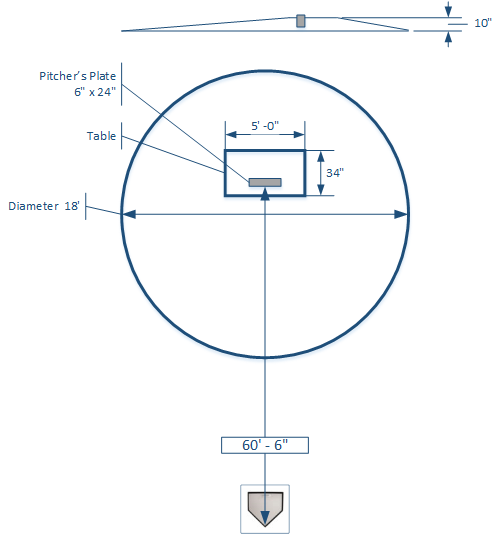- - -
- - -
Pitcher's Mound and Dimensions - UmpireBible - EXCERPT:
The pitcher's mound
On a regulation baseball diamond, the pitcher's mound measures 18' in diameter. The flat area atop the diamond, called the table, measures 5 feet wide by 34 inches deep. Six inches from the front edge of the table is the pitcher's plate (also called the rubber), which measures six inches deep by 24 inches wide.
The distance from the front edge of the pitcher's plate to the rear point of home plate measures 60'-6". This distance was established in 1893 and has served baseball well for 125 years.
The height of the mound, however, has changed – most recently in 1969, when it was lowered to its present height of 10 inches. From the front of the table, the mound slopes down such that it loses one inch of height for every foot nearer to home plate.
- - -
Pitching Rubbers: It’s Hip To Be Square - EXCERPT:
If your pitching rubber is twisted off square by a mere 1/4" on an adult baseball field (60' 6" pitching distance), the centerline at home plate will jump off by 14 1/2" to the left or right, depending which way the rubber is twisted. Increase the skew in the rubber to 1/2" off square and you move that center line off of the center of home plate by an astounding 2' 6 1/4"!
A misaligned rubber will affect a pitcher’s pitching mechanics. Ask any pitching coach or trainer. How can the pitcher square to the plate in his wind up when the front edge of the pitching rubber is not even square to the plate? Because of that, they must adjust . . .
- - -
